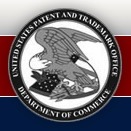Apple has been granted patents for the iPhone 4, iChat and the Apple Keyboard (apparently both the wired and wireless versions) by the US Patent & Trademark Office.
Patent D633493 is for the iPhone 4. The inventors are Jody Akana, Bartley Andre, Daniel Coster, Jeremy Bataillou, Daniele De Iuliis, Evans Hankey, Richard Howarth, Jonathan Ive, Steve Jobs, Duncan Kerr, Shin Nishibori, Matthew Dean Rohrbach, Peter Russell-Clarke, Douglas Satzger, Christopher Stringer, Eugene Whang and Rico Zorkendorfer.
Patent number 7899170 is for a multi-participant conference set-up (iChat). The inventors are Jim Normile, Hyeonkuk Jeong, Joe Abuan, Ryan Salsbury and Berkat Tung.
Patent number D633,498 is for a keyboard. The inventors are Jody Akana, Bartley Andre, Daniel Coster, Jeremy Bataillou, Daniele De Iuliis, Evans Hankey, Richard Howarth, Jonathan Ive, Steve Jobs, Duncan Kerr, Shin Nishibori, Matthew Dean Rohrbach, Peter Russell-Clarke, Douglas Satzger, Christopher Stringer, Eugene Whang and Rico Zorkendorfer
Apple was also granted patents for the following.
Patent number 7896981 is for nitriding stainless steel for consumer devices, which involves components used in various iOS devices. The inventor is Douglas Weber.
Patent number 7899941 is for ircuits, methods, and apparatus that allow a DisplayPort compatible host device to control data transactions over an I.sup.2C bus when communicating with a legacy monitor. The inventors are Ian Hendry, George C. Kyriazis and Colin Whitby-Strevens.
Patent number 7900131 involves Techniques for detecting, managing, and presenting syndication XML (feeds) are disclosed. In one embodiment, a web browser automatically determines that a web site is publishing feeds and notifies the user, who can then access the feed easily. In another embodiment, a browser determines that a web page or feed is advertising relationship XML, and displays information about the people identified in the relationship XML. In yet another embodiment, a browser determines that a file contains a feed and enables the user to view it in a user-friendly way. In yet another embodiment, feed state information is stored in a repository that is accessible by applications that are used to view the feed. In yet another embodiment, if a feed’s state changes, an application notifies the repository, and the state is updated. In yet another embodiment, a feed is parsed and stored in a structured way. The inventors are Jessica Kahn, Jens Alfke and Sarah Anne Wilkin.
Patent number 7899952 is for a method of notifying clients of a change in a USB including a first client requesting notification of a first change in the USB, detecting the first change in the USB, and notifying the first client requesting notification that the first change in the USB occurred. Thomas C. Clark is the inventor.
Patent number 7899952 is for methods and systems for editing web pages within an application capable for displaying web page content. An algorithm based on both the element and the element format is applied to identify a qualifying block to which a user’s input is directed. The heuristic applied to identify such a block is designed to select enough content that a minimal number of user inputs are required without selecting so much content that the user is unable to retain desirable portions of the web page. Then, to facilitate an easy way of editing the web page content, a visual option is displayed for selection by the user to perform an operation (deleting, copying, etc.) on the block. The visual option can be a button, an image, or a menu option. The inventors are Timothy Gene Hatcher, David Frank Harrison and Scott James Forstall.
Patent number 7900156 involves activating virtual keys of a touch-screen virtual keyboard. A method of operating a touch screen to activate one of a plurality of virtual keys is provided. A touch location is determined based on location data pertaining to touch input on the touch screen, wherein the touch input is intended to activate one of the plurality of virtual keys. Each of the plurality of virtual keys has a set of at least one key location corresponding to it. For each of the virtual keys, a parameter (such as physical distance) is determined for that virtual key that relates the touch location and the set of at least one key location corresponding to that virtual key. The determined parameters are processed to determine one of the virtual keys. For example, the determined one virtual key may be the virtual key with a key location (or more than one key location, on average) being closest to the touch location. A signal is generated indicating activation of the determined one of the virtual keys. The inventors are Bartley K. Andre, Bas Ording and Greg Christie.
Patent number 7900215 is for a method and apparatus for providing inter-application accessibility. Embodiments of the present invention provide a framework independent, introspective, extensible technique for describing and interacting with interfaces across application processes, in which an accessibility client dynamically discovers aspects of an element (e.g., a User Interface (UI) element) by asking for its lists of actions and attributes. For example, an accessibility client application can have framework independent access to accessibility server applications written in different frameworks, such as Cocoa, Carbon, Java, or others. Since the lists of attributes and actions are introspected at run time, an accessibility client can be dynamically extensible to handle new attributes and actions that are added to the accessibility server after the accessibility client is made. The accessibility servers have the flexibility to describe any aspect of an interface without limitation; and, the accessibility clients can interact with the accessibility servers (e.g., to perform actions) without a priori information about the interface element. The inventors are Michael Scott Engber, Guyerik B. Fullerton, John Owen Louch, Kevin Bartlett Aitken and Ali Ozer.
— Dennis Sellers


